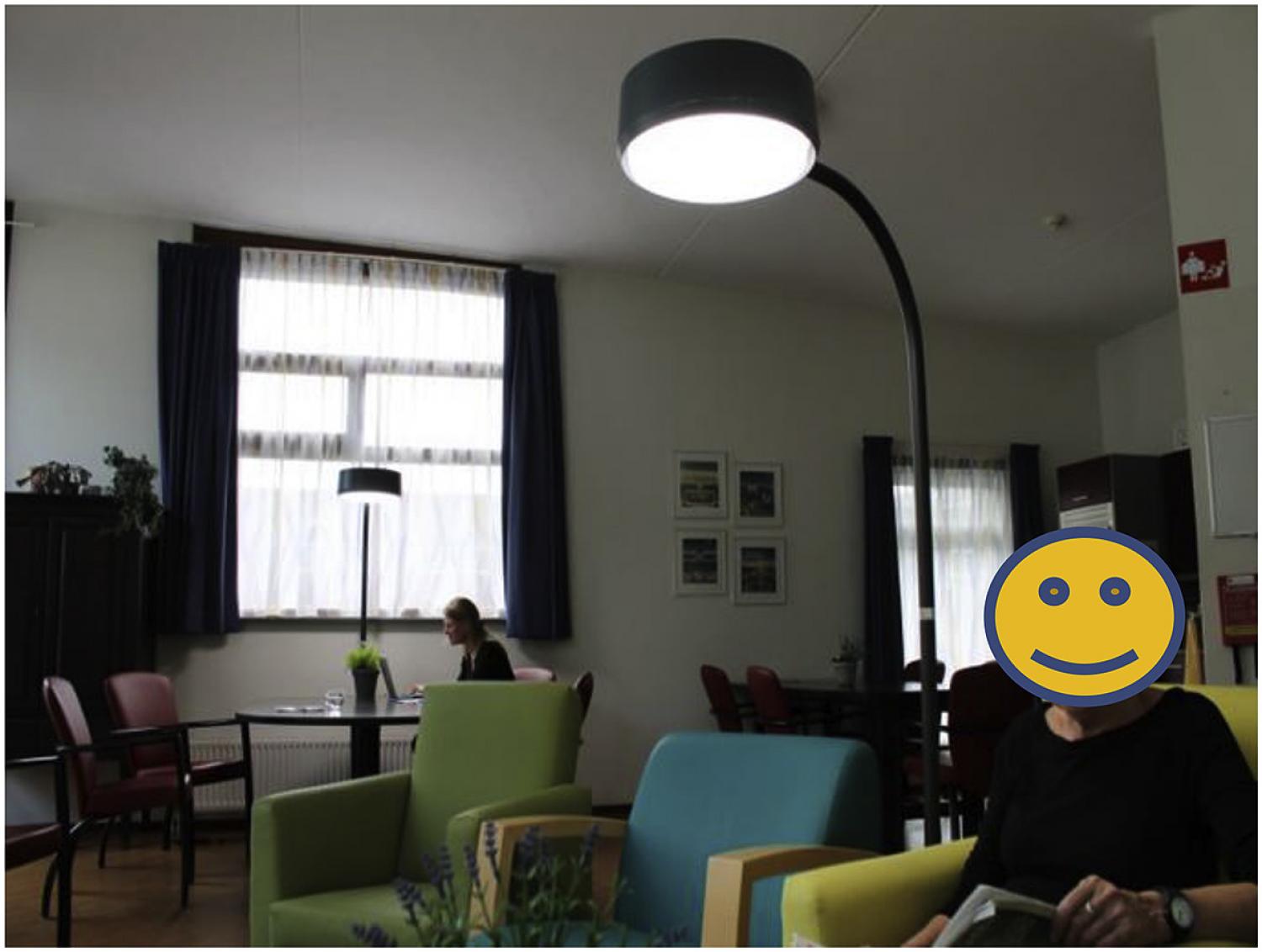
Elsevier, Building and Environment, Volume 150, March 2019
Dementia can disturb the circadian rhythm more than in normal ageing people. And their biological clock is often not enough stimulated by light. Sleep disturbances form a high burden for informal caregivers and is the main reason for institutionalization. The effect of biodynamic lighting with varying intensity and colour resembling a daylight curve has hardly been objectively researched. In this study, we evaluate the exposure to biodynamic lighting on circadian functioning of 13 patients with dementia admitted to a psychiatric hospital. Three biodynamic lighting armatures designed for home use were placed in the common area for a period of three weeks and then removed for the same period. These periods were intermittent in an AB-phase design. Objective data of the sleeping pattern were collected using a bed sensor. During exposure the average frequency of night-time bed wandering significantly decreased from 11 to 5 times (P = 0.002). The average frequency of daytime napping significantly decreased from 16 to 7 times (P = 0.004). The average total night-time sleep significantly increased from 408 to 495 min (P = 0.007). The average total time out of bed at night significantly decreased from 180 to 104 min (P = 0.006). This pilot study found promising evidence (effect sizes >0.5) that biodynamic lighting, tailored to stimulate circadian entrainment, could be helpful in decreasing sleeping disturbances in patients with dementia. This biodynamic lighting setup could easily be used as a non-pharmacological intervention in a home situation.
